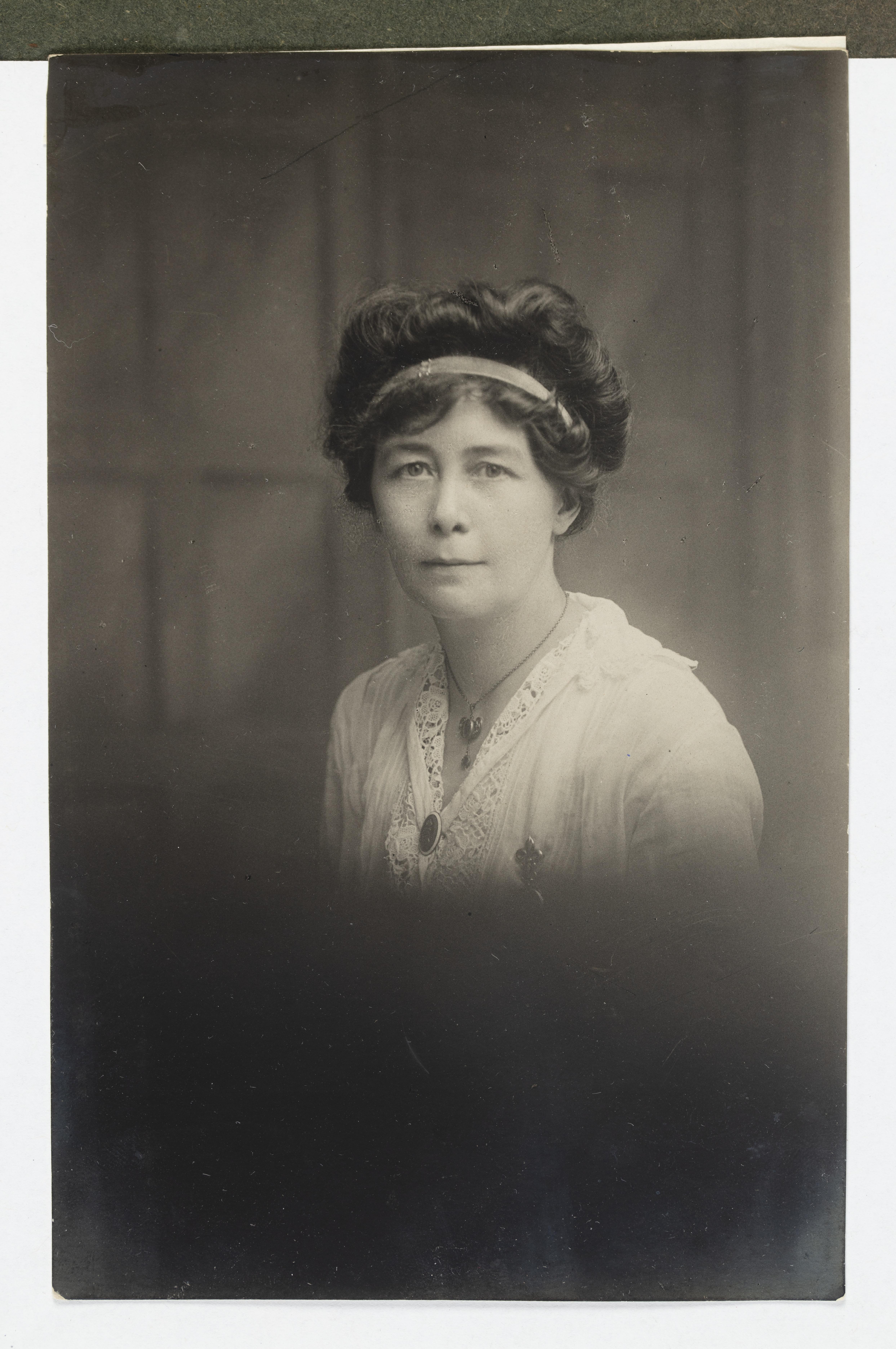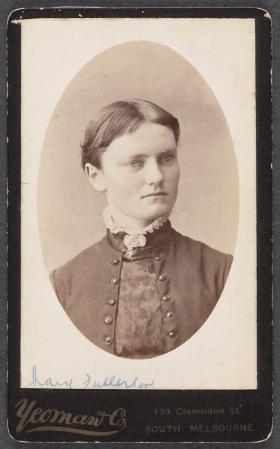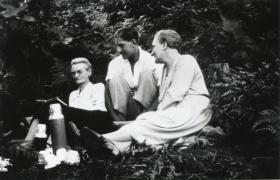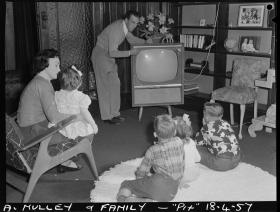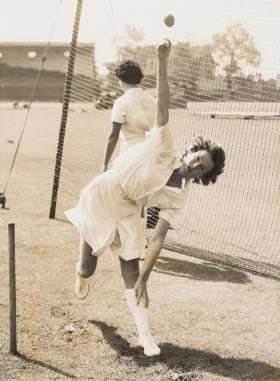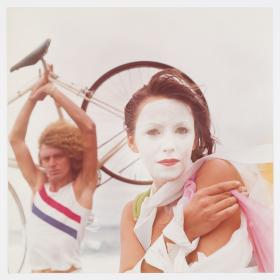‘I hope your family file your letters,’ wrote the novelist Miles Franklin to her poet friend Mary Fullerton in the 1930s. ‘Immense stuff there for you or for a biography some day.’ Miles Franklin was a biographer’s dream: a writer with a sense of the importance to literary posterity of all her writings, no matter how ephemeral. She not only kept copies of her own correspondence but also filed the replies. She left thousands of letters to the Mitchell Library, including more than 800 letters between herself and Mary Fullerton. And, as we see from her remark to Mary, she also encouraged her closest writer friends to ensure that whatever they wrote was preserved.
My interest in Mary Fullerton, a littleknown Australian writer born in 1868, began three decades ago when I dipped into the extensive Miles Franklin papers in the Mitchell as part of my research into historical women’s friendships. The two women met when Miles was working in London in the early 1920s, soon after Mary moved there in 1922. Mary’s book Bark House Days, a memoir of her childhood in Gippsland, was the catalyst for bringing together these two intensely nationalistic writers. After Miles returned to Australia, they wrote to each other for two decades until Mary’s death in 1946.
It’s a fascinating correspondence that ranges widely: they chat about daily activities, they discuss the highs and lows of the writing process, they cook up convoluted schemes to maintain the secrecy of their pseudonyms. Analysing the position of women writers, especially those from the ‘colonies’, is a favourite topic. Philosophising is interspersed with gossip and the letters are peppered liberally with witty and often scathing comments about fellow authors and recalcitrant publishers.
Of particular interest to me as a biographer of queer history was the fact that Mary Fullerton often writes about Mabel Singleton, the woman with whom she shared a series of flats throughout the years in London, and Mabel’s son Denis, who they seem to have brought up together. I found that Miles Franklin kept correspondence between herself and Mabel Singleton too, right up to 1952.
I was to discover that Mary and Mabel had met while they were involved in Vida Goldstein’s Women’s Political Association in the early years of the twentieth century when Vida made several attempts to become the first woman in Australian federal politics. They were also key players in the Women’s Peace Army during World War I. Denis was born in 1911, after which Mabel’s elderly husband banished her to his holiday home on Mount Dandenong. She and Denis moved back to her home country of England in 1921 and Mary joined her there in early 1922 after her mother died. Mabel Singleton is described in the Australian Dictionary of Biography entry on Mary Fullerton as a ‘friend and patron’.
Mary wrote novels, non-fiction books and articles for newspapers, but it was her skills as a poet that most interested Miles Franklin, who worked hard to get her friend’s poetry published. Mary sent her hundreds of poems and Miles was responsible for securing the publication of her last two collections under the pseudonym ‘E’ — Moles Do So Little With Their Privacy in 1942 and The Wonder and the Apple, which came out posthumously in 1946.
Miles remained in contact with Mary’s three unmarried sisters in Melbourne, most closely with Emily, who helped in the distribution of the two poetry collections even though she showed little interest in the poems. When sales of The Wonder and the Apple dropped off, Emily wrote to Miles that she was ‘not one atom surprised’, continuing, ‘I can’t think of one person I know whose taste it would be’. Miles has written at the top of this letter of 8 September 1946: ‘Mary’s family had no understanding of her talent, only of her lack of success.’
The sisters did rally when Miles, the indefatigable archivist, urged them to offer any material they had about Mary to book collector John Kinmont Moir, who also collected authors’ papers and was donating his collection to the Public Library. They complied in 1952, and a collection of Mary’s family letters, diaries and scrapbooks of news cuttings is now part of the JK Moir Papers at the State Library of Victoria. Annotations and crossings out in red crayon indicate that Mary’s sister Isabel Fullerton censored some of the letters before offering what she considered suitable for public consumption.
On 8 April 1946, soon after Mary’s death, Miles wrote to Mabel Singleton encouraging her to write a memoir about her long life with her companion:
You must do your memoir as it will be the most important of all — how you rescued her, as you told me, and took her to London. That is a tremendous story of a beautiful friendship and you had better write it down, or heaven knows what the newshounds will make of it when we are gone … You guard the copies of the poems you have carefully so if I am burned-out they will be safe.
Despite Miles’s further urgings — even the suggestion that Mabel could leave the manuscript to the Mitchell if it was not wanted by publishers — Mabel never did write her memoir. In 1952, she observed sadly: ‘What a story if it could be told.’ Miles died in 1954 and Mabel in 1965.
The Mitchell Library holds another collection of Mary’s papers that was not placed there by Miles Franklin. When I met Mabel’s son Denis and his wife Eileen in London in 1992, I was told what Eileen called a ‘funny story’. After Mabel died, it was discovered she still had a large number of Mary’s manuscripts in her possession. They remained in a cupboard at the home of her son and daughter-in-law for several years until one day, in frustration at having once more to move the large box containing the manuscripts in order to gain access to the cupboard, Eileen picked it up and put it out with the rubbish. Fortunately, after having second thoughts and ringing an acquaintance at Angus & Robertson publishers for advice, she retrieved the box and set in motion the process that eventually resulted in the Mitchell Library’s acquisition of the collection in 1971, now catalogued as the Mary Fullerton Papers.
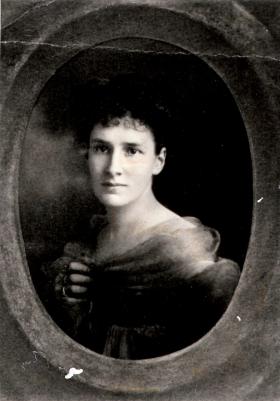
Most of the poems carrying dedications to the poet’s friend were written in the decade between 1910 and 1920, although some are dated as late as the 1940s. They are love poems written for Mabel’s eyes only and were not sent to Miles Franklin. ‘Touch’ is an early example:
Take me by the hand love
Take me by the hand
Touch is more than word love
To make me understand.Kiss me on the face dear
Kiss me on the brow
There is revelation
Where is puzzle now.Speech has tried to tell me
Eyes are but a veil
Touch me with your hand love
Else my life must fail.Touch will find it surely
What other senses miss
Tell me with your hand love
Tell me by your kiss.
If these unpublished poems had been left with the rubbish and had not found their way to a library, a rare story of same-sex love from the early twentieth century would have been lost and I as a researcher would have had to make do with speculating about the nature of the two women’s long friendship. How many more stories of this kind have been lost to history, by chance or though family censorship?
Mary Fullerton’s sisters were not entirely happy with her decision to leave Australia to live with ‘Mrs Singleton’, perhaps because they knew they were unlikely to see her again but perhaps also because they disapproved of the pair’s close relationship. In 1952, Mabel agreed with Miles that Emily Fullerton had not understood her sister’s talent, adding, ‘but Miles she has been more understanding about Mary’s and my friendship and more appreciative of what I did for Mary, than any of the others. There has been a lot of bad feeling towards me, and I had felt it very much. Yes! Mary’s soul was harried beyond belief and I had to get her away.’
The few biographical references about Mary Fullerton stress her ‘go alone’ nature. The Australian Dictionary of Biography entry, published in 1981, is typical of these, stating:
Mary Fullerton never married: ‘My nature really intended me to be the “go alone” that I’ve been’, she wrote in her unpublished memoirs.
But in that memoir written about her early life when she was in her seventies, Mary goes on to explain that she has never felt ‘any lack in my estate’ about being ‘not the marrying sort’:
‘I have never wanted more than intellectual touch with the opposite sex. At the first indication of sentiment or “philandering” I’ve always been off like a shot.’ She also writes that ‘unwomanly’ and ‘cold-hearted’ were the charges levelled at women who did not marry: I have heard these words and their like applied to myself. I have smiled, knowing them to be from an entirely false understanding of me.
As societal mores change and progress, so too do traditional institutions. In future entries in the Australian Dictionary of Biography, relationships such as that enjoyed by Mary Fullerton and Mabel Singleton may be celebrated as marriages. Instead, to honour these two women’s four-decade-long love from early last century, here is one of Mary’s unpublished poems that found its way fortuitously into the archives. In this undated sonnet, she looks towards their future life together:
Somewhere
O, somewhere down the swift-increasing years That compass me like some still rising tide, When youth lies long forgotten, and the fears Born of her innocence are set aside.
Then I shall find what now I cannot hold, — Your confidence, your dear delightful mirth, And all the intimate things we have not told, The joys that lift our spirits to Heaven from earth.
When I shall see the well-remembered face Less clearly, and the dear head bowed more white, When Life’s ambitions fade before Love’s grace, And all misgivings vanish with the night, Our seeds of understanding shall have grown, And blossomed, in a garden all our own.
Sylvia Martin’s books include Ida Leeson: A Life (Allen & Unwin, 2006), awarded the 2008 Magarey Medal for Biography, and the memoir Sky Swimming (UWA Publishing, 2020). A revised edition of her first book Passionate Friends: Mary Fullerton, Mabel Singleton and Miles Franklin was published in 2021 by Queer Oz Folk, an imprint of Interventions.
This story appears in Openbook summer 2021

